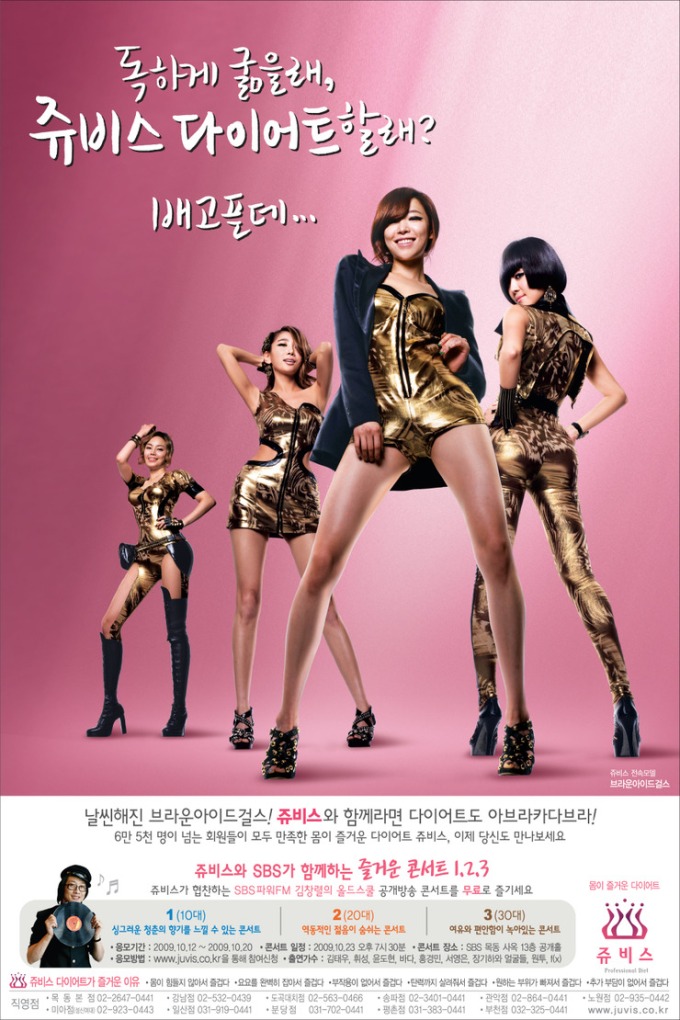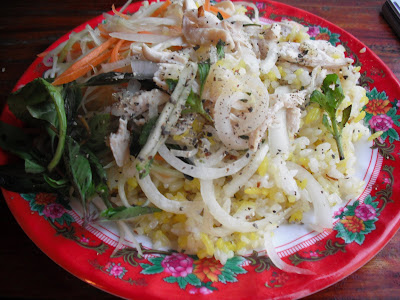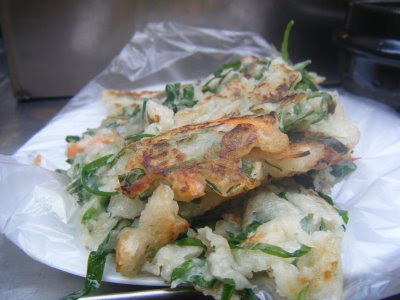Just another day in LA



Monday December 7th After the Rain View from my balcony November 24th Mi Familia en mi casa / el pavo yo cocine
December 2nd
A full moon night. My 11th night back in LA. – flew in 11/22 now it’s 12/02. Oh I grew up here in LA, and I lived here for a stint after college in the early to mid nineties, but I’d been on a worldwide, whirlwind, disORIENTating odyssey for the last 13 years, so LA is kind of new to me, in a way.
Thanks. I’m glad to be back. First day back, 10 days I was chatting up this smoking hot girl at the DMV, we had side by side chairs in the waiting area, I was renewing my license, she’d lost hers and was there to replace it. I told her how I just got back into town, she’s all, “Welcome Back!” It was pretty sweet. She was stunning, her mother Filipina, she sold Hondas – pre-owned, not used. I remember her job because I need to buy a car. I’d taken the bus to the DMV in Santa Monica.
The last time I was in LA, I was here for 6 nights, 7 days. I had a job to be at Monday morning, an apartment, and possibly even a girlfriend…all on the other side of the world. I wasn’t really back in LA. I was on vacation in LA. I was about fun. I’d rented a convertible PT Cruiser and drove that the entire time I was LA. Airport to Airport.
This time, I’m back. For real. For the long haul. The only thing I left behind on Cheju Island or anywhere in Asia are friends. Because I have no automobile of my own just yet, nor bicycle, nor any means of transportation, I’ve been hoofin’ it a lot. Taking busses. Walking. Busses. Walking. Mostly walking, as I hate waiting for the bus. I don’t mind the bus, it’s the waiting that vexes me so. Plus, LA is not a bus friendly town, so basically, as Robbie Sullivan said, and it’s so true, “The bus is cool, for about a week. Then it gets lame.” It’s true. Still, you see a lot of stuff when you ride the bus that you’d never see if you ride in a car. Especially if you are the one doing the driving.
Today, from my brother’s house on Beverly Glen near Santa Monica Blvd, I walked down Overland Blvd, past the boulevards of Olympic, Pico, Palms, National, Venice to Washington Blvd. This one Barbeque place looked really good; a few massage parlors, some that do nails and other womanly stuff as well – things I saw along the way.
At Washington, I turned left and walked past the long Sony Studios with the large billboards of current releases, SJ Parker and HughG flashing their big blue eyes on a big billboard opposite the huge white satellite dishes across the street and I continued along Washington to the main stretchy intersection with the Triangle Bldg, the oldest bldg in Culver City where Culver meets Washington – downtown Culver City. It’s little sprawling but easily traversed by foot what with the super wide sidewalks. Downtown Culver City is very posh, a little upscale, kind of like Pasadena, but not so far from LA. You have the Kirk Douglas Theater, the Culver Plaza Theater, the Pacific Movie Theater, Greek, Mexican, Korean cuisine. Other restaurants are there obviously, but those were the three that stood out to me. I was hungry. I hadn’t eaten a thing all day. It was 3 o’clock, just minutes before my movie began. I was there to see a movie. I’d walked for ninety minutes from my brother’s house. My mp3 player’s battery had died along the way. I was carrying an old paperback copy of The Electric Kool Aid Acid Test by Tom Wolfe. My friend phoned me. I felt the vibration. I mentioned the book and he’s all, --Yeah, Ken Kesey. --No, he’s in it but he didn’t write it. --I read that back in Berkeley. Had we been face to face, I would’ve blathered on about Tom Wolfe and the Merry Pranksters and Kesey and One Flew and lots of other literary and psychedelic jibber-jabber. But I don’t like talking on the phone. Plus, I’d just bought a phone on the cheap so I pay for each call by the minute whether I place the call or not. I kept it short.
The cute girl with braces behind the counter at the Pacific Theater told me there’d be almost 12 minutes of previews. It was just three o’clock. The movie started five past. I had a good seventeen minutes before show time. I went outside though the glass doors in the long glass wall of the theater. Iron benches dotted the large courtyard. There was outdoor seating outside the three nearby restaurants. On the sly, of course, I filled a small bowl and took one monster hit and held it in till very little smoke exited my lungs. I smoked a cigarette simultaneously and took my sweet time about it. I can be invisible if I want to be, and I had to be. Lots of commerce and shops and banks and rests and cops and people milling about the wide manicured sidewalks and clean streets.
Funny thing is, I bought my ticket outside the theater at an ATM looking metal box attached to the side of the theater. There’s a line of them. Push some buttons, choose your movie and time, swipe your card, cha ching – your ticket sir/madam. No voice required. Self service ticketing, if you got a bank card.
Another funny thing is this. The Acid Book that I was just by chance reading, was about LSD and hippies in the 60’s and at the same time, actually 10 years prior, the US military was using LSD in mind control experiments. LSD had been invented/discovered/first chemically synthesized in a lab setting April 1943, by the Swiss chemist, Albert Hoffman, and he immediately published his findings.
The events of his first LSD trip, now known as “Bicycle Day”, after his bicycle ride home from the lab where he accidentally dosed himself, proved to Hofmann that he had indeed made a significant discovery.
A psychoactive substance with extraordinary potency, capable of causing paradigm shifts of consciousness in incredibly low doses, Hofmann foresaw the drug as a powerful psychiatric tool; because of its intense and introspective nature, he couldn’t imagine anyone using it recreationally.
‘Bicycle Day’ is the name given to the day he accidentally exposed himself to the substance (he wasn’t wearing gloves!) and then subsequently rode his bike home and started tripping along the way. Three day later, he dosed himself in a more clinical setting. From there he began writing about the power of LSD. It wasn’t long before many people were taking it and trying to utilize its energy towards some goal. Kesey and Leery were speaking of an evolutionary breakthrough of the mind where humans can harness the power of psychedelics and evolve – create a more perfect world.
Point of clarification – back in the day, the 60’s when LSD first achieved widespread usage, it was classified as a hallucinogenic. This has since been changed to psychedelic. The reason, and it’s pretty simple to understand, is that to hallucinate is to see something that isn’t there. A hallucination is a creation by a person’s mind. It is now believed by many that what is seen while on a ‘trip’ is ‘there,’ it is not imagined; it’s just that a person before under the influence of ‘psychedelics’ couldn’t see it was there. People write books about this stuff, I don’t want to go there, suffice it to say that in the 60’s LSD was seen by many as a gateway to human evolution, by where a person could harness the power of controlling one’s own mind and do amazing things. Invisibility? The ability to pass through walls? MK7000, where the US military gave does of LSD to soldiers under observation. Perhaps, in addition to other purposes, perhaps one chapter or one unit of the military was trying to create Jedi like soldiers who can use their mind to defeat an enemy. Good idea for a movie.
Movies and LA. Every time I come to LA I see at least one movie. More if I have the time. So many movies play each day in LA: UCLA film archive, the Nuart, the Beverly, the Fairfax, the Aero Theater. Funny story about the Aero Theater in Santa Monica – once I went to a double feature there with a bottle of rum, I lived right down the street at the time. I ended up passing out and waking up long after midnight. I set off the motion detector alarm as I walked around. I grabbed a Kit Kit, got let out, not without major damage done to the door and its myriad of locks by the security company. I walked home. Somebody probably got fired over that.
Anywho, because there are so many movies playing and because you can’t possibly see them all, you’ve got to be selective. I love Adam Sandler movies but I’d never pay 10 bucks to see him on the big screen. He’s just as funny on the small screen. I like cinema. I like big movies on the big screen. That’s why of all the movies playing this week, first week in December 2009, the first week I’m free in LA to do what I choose, I chose The Men who Stare at Goats. And that’s why all this LSD jive is appropriate because it is true that the US government funded US army experimental operations with LSD and other types of mind altering agents and this does make a good premise from which to make a movie and George Clooney was very believable as a Jedi trained soldier and Jeff ‘the dude’ Bridges was awesome as his CO, guru. Add Kevin Spacey and Ewen McGregor to the mix and you have yourselves a wonderful movie. It was funny, poignant, interesting, well shot and acted – it dragged a little bit at times but that’s why the theater experience is necessary in a film this big. The Iraq war. Lots of ideas passed on from this film. Lots of wonderful ideas. Optimum Trajectory. There is more truth to this story that you would believe. Find out where your destiny lies. And the river will take you there. Just another day in LA.












 RSS Feed
RSS Feed




Recent comments